Intelligent Design

I found this at a site I love but I lost my note on where I found it, Argh. If it was you, please let me know...
Technorati Tags: Folly, Humor, Conservation, Environment,


 In advance of a post on "Unchained Memories," the HBO documentary based on slave narratives, here's a heartfelt plug for "Brother from Another Planet."
In advance of a post on "Unchained Memories," the HBO documentary based on slave narratives, here's a heartfelt plug for "Brother from Another Planet." The subplots, involving a washed-up lounge singer, mid-Westerners, heroin, etc. - are somewhat tedious and mainly serve to demonstrate that people are so wrapped up in themselves they don't see what's in front of them. The heart of this film is the immortal story of the underground railroad.
The subplots, involving a washed-up lounge singer, mid-Westerners, heroin, etc. - are somewhat tedious and mainly serve to demonstrate that people are so wrapped up in themselves they don't see what's in front of them. The heart of this film is the immortal story of the underground railroad.One day Joni Mitchell came unexpectedly upon a busker spinning wonderful melodies. It was a magic moment but nobody was stopping to enjoy it, and she confessed that she, too, walked away.
... the one man bandA few years ago my band was hired to do a little Christmas tour in South Carolina. When we arrived at one of the historical sites we were booked into, the guy in charge of the performance ruefully admitted he'd forgotten we were coming. There was "no room at the inn" so to speak. His performance space was full of something else.
By the quick lunch stand
He was playing real good, for free
Nobody stopped to hear him
Though he played so sweet and high
They knew he had never
Been on their T.V.
So they passed his music by
I meant to go over and ask for a song
Maybe put on a harmony...
I heard his refrain
As the signal changed
He was playing real good, for free
When the midnight cry began,So I replaced them with lyrics from an Elizabethan Christmas Carol by George Withers. And we gave it an old-time feel. Pretend you're on a sunny pier in South Carolina and you happen upon some crazy musicians. Stay a while and have a listen!
Oh what lamentation,
Thousands sleeping in their sins,
Neglecting their salvation...
Labels: music
From Sherman Alexie's Ten Little Indians:
A few years ago Harrison told Frank's third grade teacher that Indians didn't believe in using numbers, that the science of mathematics was a colonial evil.I've liked all of Alexie's books and love his movie Smoke Signals.
"Well," the mystified teacher had asked, "then how do Indians count?"
"We guess," Harrison had said with as much profundity as he could fake.
I read in somebody's blog the other day that I write so much here that "good luck trying to find ..." something she was looking for in an old post - though I do have a search engine on the sidebar.
In December, the board of a co-op apartment building at Fifth Ave. and 74th St., whose tenants include actress Mary Tyler Moore and CNN anchor Paula Zahn, removed the hawks' huge nest from a 12th-story ledge, calling it a hazard."Lola appears to be turning the eggs every half hour or so. Pale Male had two sittings today between noon and sunset. He roosted in the Pilgrim Hill Pin Oak tonight," says an entry posted last Sunday.
The board later bowed to public outrage and pressure from the city and environmentalists, and restored a row of anti-pigeon spikes that the hawks had used to anchor their nest.
Pale Male and Lola immediately rebuilt their nest.
Since 2001 they've produced seven baby birds, four of which survived.
My daughter Melina pointed out, when I wrote my account of the Giant Cheese of Perth, Canada, that there had been an exalted predecessor: the Mammoth Cheese given to Thomas Jefferson on New Year's Day, 1802.
| Actually there may have been TWO predecessors - Jeffrey Pasley opines there was "a similar large dairy product made in Cheshire, England, to celebrate George III’s recovery" from porphyria. I'm not sure I believe in this proto-cheese - jeez, they didn't even MENTION it in The Madness of King George - which was a really great movie and in which we see George blogging on July 4, 1776: "Nothing of importance happened today." |
| Edward S. Ellis wrote: "Mr. Jefferson was not in the habit 'of deadheading at hotels,' nor of receiving presents, however inconsiderable in value, which would place him under any obligation to the donor. His financial diary contains the following minute regarding the cheese: 1802. Gave Rev'd Mr. Leland, bearer of the cheese of 1235 Ibs weight, 200 D." (About sixteen cents a pound) |
| Jeff Pasley): Giant foodstuffs and fossils seemed to speak some democratic, patriotic idiom that the Federalists did not understand. ... A copycat baker in Philadelphia advertised "Mammoth Bread" for sale; a "Mammoth Eater" in Washington downed 42 eggs in ten minutes; and two admiring Philadelphia butchers sent what Jefferson himself referred to as a "Mammoth veal," a hindquarter of the largest calf "we remember ever to have seen in this part of the country," 436 pounds at only 115 days old. By the time the veal got to Jefferson, however, its age was such that he declined to eat it. |
| In 1829, two of the 1801 curd suppliers, Israel and Molly Cole, sent another new Democratic president another congratulatory cheese, along with a cover letter inquiring about the new administration's naval policy. At 100 pounds, however, Andrew Jackson's cheese was only relatively mammoth. (Pasley.) |
My professor Joanne Freedman likes to use this story to show how Americans seemed to divide their presidents into two categories: Those who they thought would appreciate a spontaneous gift of a Mammoth Wheel of Cheese, and presidents who they did not think would appreciate it.
Jefferson, Jackson: would get cheese
John Adamses, snarky New Yorker Martin van Buren: would not get cheese.
Best of Me Symphony #70 is up at The Owner's Manual, hosted by Kinky Friedman.
So on this grey Easter morning I was (natch) browsing our local aggregator, NCblogs.com, when a headline at Collective Sigh got my immediate attention. It said:
Why is this night different from all other nights?Friday March 25??? Candid Camera should have been here. I jumped up out of my chair, heart pounding, and snatched my calendar. Had a terminal brain cloud descended on me? How could I have missed Passover?? That's what an insecure old fart I am.
The question comes from the Pesach Haggadah, and was asked by the youngest person at the Seder table by Jews worldwide on Friday, March 25, 2005.
 Yesterday was the band's first rehearsal for this year's North Carolina Youth Tap Ensemble concert.
Yesterday was the band's first rehearsal for this year's North Carolina Youth Tap Ensemble concert. This is the inside of the door in the upstairs studio at the Chapel Hill Ballet School where we meet.
This is the inside of the door in the upstairs studio at the Chapel Hill Ballet School where we meet.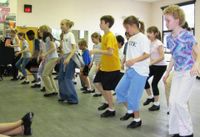 The kids in the group range from extra-tiny to seniors in high school. Over the years I've seen the extra-tiny ones grow to be high-school seniors, and then graduate, and some even come back as guest performers.
The kids in the group range from extra-tiny to seniors in high school. Over the years I've seen the extra-tiny ones grow to be high-school seniors, and then graduate, and some even come back as guest performers. This picture from the NCYTE website is of a cute kid who is profoundly deaf. You have to tap him on the shoulder to get his attention. He was smaller than this when I first met him. The picture's a year or two old - now he's quite a bit bigger and a very good tapper.
This picture from the NCYTE website is of a cute kid who is profoundly deaf. You have to tap him on the shoulder to get his attention. He was smaller than this when I first met him. The picture's a year or two old - now he's quite a bit bigger and a very good tapper. Matt the drummer was first to set up. He establishes a "defensible position" in the corner, barricading himself strategically so that no tappers come crashing into him. The bassist and the pianist were not set up yet when I was taking these pictures but you can see the bass case.
Matt the drummer was first to set up. He establishes a "defensible position" in the corner, barricading himself strategically so that no tappers come crashing into him. The bassist and the pianist were not set up yet when I was taking these pictures but you can see the bass case. Meanwhile the kids were rehearsing their gumshoe number. There are jingling bells on the boots and they sing an African song as they dance. They also dance to jazz; fiddle tunes (well, that's why I'm there); Haydn by the Mallarme string quartet; techno; and sometimes just the sound of their own feet.
Meanwhile the kids were rehearsing their gumshoe number. There are jingling bells on the boots and they sing an African song as they dance. They also dance to jazz; fiddle tunes (well, that's why I'm there); Haydn by the Mallarme string quartet; techno; and sometimes just the sound of their own feet.Last year I helped two middle-school Latino kids work on their PowerPoint presentations on dinosaurs. Many Anglo kids were working on the same thing at the same time in the same way, under the eye of the roving teacher, so I feel confident this was the approved procedure:
 In the interest of fair disclosure: I hate PowerPoint. It sucks the life out of a room. Everyone focuses on the least interesting things in the room - the frequently misfunctioning projecting setup and the ugly blue slides - and there is no energy left for real interaction. What a deadening experience. In the interest of fair disclosure: I hate PowerPoint. It sucks the life out of a room. Everyone focuses on the least interesting things in the room - the frequently misfunctioning projecting setup and the ugly blue slides - and there is no energy left for real interaction. What a deadening experience.The technology of putting a slide show together is so absorbing even to an adult that it uses up brainpower that could have gone into writing it well or preparing an absorbing oral presentation. If by any chance you have never seen The Gettysburg Powerpoint Presentation (Lincoln's address as it would have been rendered in PowerPoint), read it and weep. Yes, I loathe PowerPoint, which only came into my life when I began volunteering. The orientation meetings involved co-ordinators standing next to their PowerPoint presentations and reading the slides to us off the screen. Jeez, if the slide is on the screen, why read it to us? And if you can read it, why do we have to look at the screen? |
 My kids barely read English on a first grade level. They certainly could not read the articles they were pasting into their slides.
My kids barely read English on a first grade level. They certainly could not read the articles they were pasting into their slides.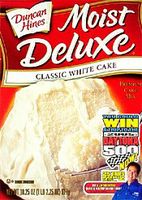 Isn't this like showing kids how to "open a box of cake mix, add water, and stir" and then telling them they've learned to cook?
Isn't this like showing kids how to "open a box of cake mix, add water, and stir" and then telling them they've learned to cook?Finally, caring about the provenance of "facts" and information you find on the net.
 In long-ago high school history classes, we weren't exposed to primary sources. Did they think we couldn't handle them? We didn't read the entertainingly crabby letters written by Jefferson and Adams, we read bland textbook recaps.
In long-ago high school history classes, we weren't exposed to primary sources. Did they think we couldn't handle them? We didn't read the entertainingly crabby letters written by Jefferson and Adams, we read bland textbook recaps."The parent has a variety of ways to deliver the food. Food that has been swallowed by the parents needs to be regurgitated into the nestling's mouth. The parent may place its bill into the gaping mouth, forcing or pumping the food into the nestling's throat. "Pigeon parents grab the nestling's bill, while the young bird reaches inside for food. Many gull species have a conspicuous spot on the tip of the beak which the young peck, forcing regurgitation. Regurgitated food is assumed to have been partially digested by enzymatic activity of the parent's digestive system (more)." |
From the highest authority. Origin: In horse racing circles tips on which horse is a likely winner circulate amongst punters. The most trusted authorities are considered to be those in closest touch with the recent form of the horse, i.e. stable lads, trainers etc. The notional 'from the horse's mouth' is supposed to indicate one step better than even that inner circle. |
| Genealogists always ask about any piece of data: where did it come from? The internet has made it possible for genealogical misinformation to travel quickly, losing its attribution along the way. I once spent many hours tracking down the source of a dubious death date, finally finding it to be a cemetery transcription. When I visited the cemetery myself, the death date, etched in stone, was eroded but readable. It said 1849, not 1819. False datum squelched to my satisfaction. A tombstone is not exactly a primary document (the carver carves what he's told to carve), but it's close. |
Primary sources are original items or records that have survived from the past, such as ... letters, photographs, and manuscripts. They were part of a direct personal experience of a time or event.From UC Berkeley:
Secondary Sources are created by documenting or analyzing someone else's experience to provide a perspective or description of a past event and may have been written long after an event took place. Many sources (such as textbooks and encyclopedias) used in a typical school environment are secondary sources.How Reliable are Primary Sources? Every document has a creator, and every creator has a point of view or bias. The Library of Congress presents these archival records of America's past with minimal interpretation or explanation.
Primary sources enable the researcher to get as close as possible to what actually happened during an historical event or time period. A primary source reflects the individual viewpoint of a participant or observer. Undergraduates are sometimes allowed to use ... the types of materials listed below.My thanks to anybody who plowed patiently through these semi-diatribes.
- Diaries, journals, speeches, interviews, letters, memos, manuscripts and other papers in which individuals describe events in which they were participants or observers.
- Memoirs and autobiographies. These may be less reliable than diaries or letters since they are usually written long after events occurred and may be distorted by bias, dimming memory or the revised perspective that may come with hindsight. On the other hand, they are sometimes the only source for certain information.
- Records of or information collected by government agencies. Many kinds of records (births, deaths, marriages; permits and licences issued; census data; etc.) document conditions in the society.
- Records of organizations. The minutes, reports, correspondence, etc. of an organization or agency serve as an ongoing record of the activity and thinking of that organization or agency.
- Published materials (books, magazine and journal articles, newspaper articles) written at the time about a particular event. While these are sometimes accounts by participants, in most cases they are written by journalists or other observers. The important thing is to distinguish between material written at the time of an event as a kind of report, and material written much later, as historical analysis.
- Photographs, audio recordings and moving pictures or video recordings, documenting what happened.
- Materials that document the attitudes and popular thought of a historical time period. ... the point is to use these sources, written or produced at the time, as evidence of how people were thinking.
- Research data such as anthropological field notes, the results of scientific experiments, and other scholarly activity of the time.
(As taught to me by a wily old professional in the music biz.) I learned this technique from the mouth of a venerable Sephardic musician whom I shall call Joe Medina in order to protect his trade secret. Joe was an old hand at self-promotion. Here's how you do it:
|
My aunt, who worked at Time, Life Inc., used to say that the true story was the one which was entertaining. She was a factoidophile.
From Bartleby.com, a definition of factoid:
Similarly, factoid originally referred to a piece of information that appears to be reliable or accurate, as from being repeated so often that people assume it is true. Factoid has since developed a second meaning, that of a brief, somewhat interesting fact, that might better have been called a factette. ... Many Panelists prefer terms such as statistics, trivia, useless facts, and just plain facts in this sentence. |
 I started this scavenger hunt in response to a seeming consensus at our BloggerCon-by-the-bar: that "linking makes it so," that if there are enough links, there is reality and credibility. I'm working my way towards the difference between secondary (and tertiary and game of telephone xeroxes-of-xeroxes) sources and primary sources.
I started this scavenger hunt in response to a seeming consensus at our BloggerCon-by-the-bar: that "linking makes it so," that if there are enough links, there is reality and credibility. I'm working my way towards the difference between secondary (and tertiary and game of telephone xeroxes-of-xeroxes) sources and primary sources.... one of the [second BloggerCon] themes is going to be Nuking The Echo Chamber. ... How do we methodically and systematically overcome the tendency for echo chambers to form and self-perpetuate.From Wikipedia:
... observers of journalism in the mass media describe an echo chamber effect in media discourse. One purveyor of information will make a claim, which many like-minded people then repeat, overhear, and repeat again (often in an exaggerated or otherwise distorted form) until most people assume that some extreme variation of the story is true.From Onno:
Blogs are recursive ... In his book "The name of the rose", Umberto Eco has one of the monks saying that each book is about other books. It's much the same with blogs.After a newbie outing I reminisced, recursively, on the recursive nature of our BloggerCon.
I was also growing increasingly frustrated with the echo chamber effect of weblogs. A meme drifts out there, and then 38 different people post their take on that meme, and they all link to each other, and, as a reader, you bounce from post to post, the semantic feedback growing until it's deafening. I needed to remove myself from that for a while.From Wetware, June 20, 2004: The Origins of Our Ideas
Every day we take in a lot of information from a variety of sources. This information shapes our ideas, opinions and to some extent our personality. But where is it coming from?
Most of us don't pay a lot of attention to this. We believe we make up our own opinions about the things that matter to us and leave the rest to professional and / or self proclaimed pundits.
... Who it is that really shapes our opinions and views on the world? ... [I'd like to] find out where the news and other information I'm consuming is really originated. That way I can see if my sources are colored by the influence of a single media company, religious group or government; the Bush administration or Michael Moore; the WWF for Nature or Texaco; the fans of the Pistons or the Lakers.
This morning's chortle, from an infamous gallery of 1970s Weight Watchers recipe cards at Candyboots:

| "Once upon a time the world was young and the words "mackerel" and "pudding" existed far, far away from one another. "One day, that all changed. And then, whoever was responsible somehow thought the word fluffy would help. "Oh, and eggs, too." |
Labels: recipes
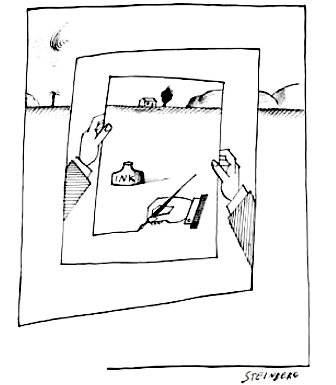 Part two on this series, a few more bloggers weigh in...
Part two on this series, a few more bloggers weigh in...Bias exists in news media from the minute the story is assigned (why did the editor choose that particular story?) to where it is placed on the page or in the broadcast. Reporters also are affected by bias — what questions they ask, the tone in which they ask those questions.From Apathy:
The dedicated reader/viewer can often go online and look at some of the same research a journalist did and compare it with the final story. Best of all, readers/viewers can contact journalists directly via email to follow up or comment on stories.
When you know the information came from a specific person/entity, how do you know to trust it? Obviously if it's on the internet, you don't inherently trust it much more than a talking can of tomato paste. The direct query is, specifically, how do you find out the originator's biases and entanglements?
- How do we discern troubling content? How can we validate what we find? And What can we do about it?
- One of the interesting things about the Internet is the ability of anyone, even me, to create and publish authentic looking, authoritative appearing documents for virtually no cost and with little effort. A bogus report on a serious subject looks just as official as the real thing. Using search engines, we can be led to official authority, unofficial commentary, and misleading or fraudulent material in the click of a mouse. In the face of such possibility questions must also be raised about the responsibilities of web authors.
Supreme Court Justice Potter Stewart once said of pornography -- "I know it when I see it." ... we must not accept anything we find at face value. When something doesn't seem right we must challenge it.- Is the material within the speciality or area of competence of the blogger?
- Does the blogger have strengths and weaknesses? Has the blogger's bias been demonstrated before? Is the questioned material consistent with that bias or not? Is it in the blogger's area of expertise?
- What is the source of the material?
- When something doesn't seem right, the first step one can take is to try to trace the source of the material.
... The material quoted by Barger did not come directly from the book. It came from a web page set up by Matt Nuenke [who] prefaced his quotations with several revelatory paragraphs of introductory comments. He describes himself as "a promoter of eugenics, nationalism and futurism."
Had this sentence, and perhaps a few more from the introduction been included in the selections quoted in the Weblog, perhaps it would have provided greater warning to the unsuspecting reader.
 In our local BloggerCon-by-the-bar the other night we began a discussion of credibility, "objectivity" (a word so loaded it requires quotes), and truth. After rooting around a bit I've decided to write a little series on blog believability and responsibility -- and to start with the use of the "being verb." Oops: Comments were turned off by accident (I don't always look at the bottom of my screen). Sorry, I really look forward to hearing what you think!
In our local BloggerCon-by-the-bar the other night we began a discussion of credibility, "objectivity" (a word so loaded it requires quotes), and truth. After rooting around a bit I've decided to write a little series on blog believability and responsibility -- and to start with the use of the "being verb." Oops: Comments were turned off by accident (I don't always look at the bottom of my screen). Sorry, I really look forward to hearing what you think! Most editors will assert that their publications do, or at least try to do, a good job of presenting impartial news. And they will tell you they want readers to make up their own minds about news items. Frankly, that is just fatuous. ... someone - whether with good or ill intention - decides what people will read and how it will be presented to them.I read local newspapers in Spanish which often report news unavailable in mainstream media, and discuss world reaction to US events and policy, and then ask: "Why is this information (or why are these viewpoints) not available in the Anglo media?" Anyway, to continue:
If newspapers were ... non-biased ... we would be seeing reporting from vastly different perspectives than we do. ... in North America, where are the reports from Southeast Asia News? Or Africa Today? Or Pravda? Or any other of a host of news services? Print those articles, which will be clearly different from what we usually see, and then let your readers make up their own minds.
... when a newspaper reports about some conflict and the story of the day is about huge deaths on one side or the other, they influence their readers immensely by choosing, or not, the word "massacre." ... When four Canadian soldiers were killed [in Afghanistan by] American bombing. Canadian papers reported it as "a tragedy," but the Americans reported it as "collateral damage."A follow-up article, also from the YellowTimes: Bafflegab: Separating the message from the delivery infrastructure by Paul Harris, September 29, 2002. Excerpts:
I will not submit for publishing something that really belongs on a bumper-sticker on the back of somebody's SUV.
Editors often brag that what is printed in their newspapers is the "truth." Whose truth? Truth is a very movable and very ephemeral thing. [Church of the Nativity situation] For one side, the truth is that these people occupied the Church and held priests captive against their will. For the other side, these people were trapped inside the Church and under siege with the priests free to come and go as they wished. Are either of these "true"?
[Sometimes] "truth" is apparently beyond debate - like gravity, for instance. Not only is it a good idea, it's actually a law. It's so important they don't even shut it off on the weekends. But since physicists are constantly seeking ways to overcome it, the day may come when it won't be true any longer. Truth is not static.
... by reading most daily papers, how many readers would know that there are over 50 armed conflicts occurring in the world even as I type this? Why have most journals not thought to help their readers care?
Media often creates social truisms merely by perpetuating the same errors over and over. ... Everyone knows [the Titanic] sank on its maiden voyage. The press ... always references that it sank on its maiden voyage. Well, actually, it sank on its third voyage. ... But forever after, we will believe it sank on its maiden voyage, because that's what we are repeatedly told.
... review the coverage of the September 11 attacks. News media invariably described them as cruel, horrific, heinous, and so on because they were deliberately shaping the views of their audience. Now there isn't much doubt that most people would have agreed, but the job of the media is to report the facts and let the facts do their own talking. The editorialized adjectives were unnecessary to the reporting of the story.
Remember, December 7, 1941 was a "day of infamy" for the Americans; it was a great victory for the Japanese. It all depends how you say it and who is saying it.
... Reporters know that they must play a game if they ever expect to get their stories, to get access to the politicians and decision makers, and to be allowed into the "inner circle" of informed people.
To non-critical readers, texts provide facts. To the critical reader, the text provides one portrayal of the facts: how the writer interpreted the subject matter.
You must learn to examine the evidence provided by the writer, and to determine if evidence has been omitted and why. You must learn to weigh the influences of bias and motivation as well as recognizing your own assumptions, prejudices, and biases.
I found out at BoingBoing that my own town of Durham NC has, at the School of Science and Mathematics, an Exhibit of Optical Toys. It reminded me of a wonderful project I did with my dad when I was a kid: after we saw a mutoscope in a museum, we went home and built our own.
 The pictures here are from Marvin's Marvelous Mechanical Museum. The mutoscope was a precurser to the movies. Cards were mounted on belts which were affixed to cylinders which revolved - at first, they were hand cranked, and later, thay had motors.
The pictures here are from Marvin's Marvelous Mechanical Museum. The mutoscope was a precurser to the movies. Cards were mounted on belts which were affixed to cylinders which revolved - at first, they were hand cranked, and later, thay had motors.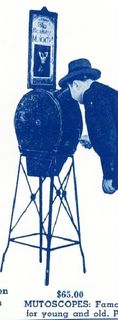 By the way, even back then soft porn was a very profitable genre for the moving picture people - if you search for "mutoscope" you'll find a lot of girlie cards...
By the way, even back then soft porn was a very profitable genre for the moving picture people - if you search for "mutoscope" you'll find a lot of girlie cards... The mutoscope innards you see here are from a much more commercial model than the one we saw but it gives you an idea.
The mutoscope innards you see here are from a much more commercial model than the one we saw but it gives you an idea. Some mutoscopes are hand-cranked but my dad helped me rig up a motor so mine would grind around on its own. He had a degree in mechanical and electrical engineering from MIT so he was very well qualified to help out. My dad was not much of a talker or a hugger, so the projects we did together are my very best memories of him.
Some mutoscopes are hand-cranked but my dad helped me rig up a motor so mine would grind around on its own. He had a degree in mechanical and electrical engineering from MIT so he was very well qualified to help out. My dad was not much of a talker or a hugger, so the projects we did together are my very best memories of him.
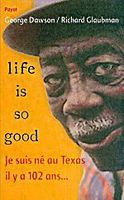 I've just read the ghostwritten Life is So Good, the reminiscences of George Dawson, the Texas centenarian whose path to literacy I wrote about here.
I've just read the ghostwritten Life is So Good, the reminiscences of George Dawson, the Texas centenarian whose path to literacy I wrote about here. "Wanting to enjoy every moment, I stared at the hard candies..."As I said in my Blogcritics review, if George Dawson began his sentences with gerunds, I'll eat my hat.
...lately I been talking a lot about my days in Marshall with this man that be coming to see me now. His name is Richard. He has lots of questions, thinks he wants to write a book. He comes with a tape recorder and we just sit and talk all day.The name "Richard" appears eight times in two and a half pages. Somebody is pretty stuck on himself.
He's different than other people that I know ... Most folks that I know don't read so much and don't have great book learning. This man Richard is different that way. ... Richard, this writer, reads a lot of books. So one night I asked him some questions ...
 Nevertheless, Dawson's determination -- to share the experiences of a black man so poor he didn't even notice the Depression -- carries the day.
Nevertheless, Dawson's determination -- to share the experiences of a black man so poor he didn't even notice the Depression -- carries the day.Did all my growing up in Marshall but was always on the outside. I couldn't read in those days and never even looked at a newspaper. ... In those days, it seems like everything had two stories, the white story and the colored story.Thankfully historians attend to humble people more than they used to. Archaeologists even sift through old slave cookfires to see what their makers' unchronicled lives might have been like. The lives of humble people disappear if nobody writes the stories. For this reason, Dawson's memories are priceless: he tells of surviving on a farm where the only product that could be bartered out was "ribbon syrup," how to slaughter a hog, the way he and the other members of the Negro baseball league couldn't find bathrooms they could use, working on the levees, riding the rails.
I started to notice that this paper was not about the Marshall that I knew. All the pictures, at the fire hall, the school yard, the grange, and the rodeo, only had white people in them. ... I am a witness to the truth. That's why I am still here. I can't let the truth die with me.
Being twenty-one and free and just full of myself, I thought, it's a good thing I'm here. Holding back that river is gonna be some job. They will be needing my help to build that levee.The other thing which has gone unremarked in the book's reviews is this remarkable fact: that George Dawson and his wife Elzenia raised seven children on his low wages - and that all seven children graduated not only from high school but from college too.
I could see that job was made for me. ... I figured I was a man now and maybe about the luckiest one alive to be able to build a levee on the great Mississippi River. Of course, there was hundreds and hundreds of men working along the river too. But right then, if you had asked me to build the levee all by myself, I wouldn't have seen it as a problem.
Visit the Carnival of Education, week 7, at the site of Dr. Cookie a.k.a. Jennie D. Lots of good posts.
Extracted from a report from the BBC:
A 15-year-old who has eaten little other than jam sandwiches for 11 years has had tests to see what effect they have had on his body.
The high sugar diet has not stunted Craig Flatman's growth or energy - he is 6ft 2in and a keen sportsman.
Dr David Rae, who carried out the tests, said all the results were "absolutely normal". "I have to say it surprises me a little," he said. "But there is no doubt that some of the results suggest you may be on the borderline of developing iron deficiency," Dr Rae added.
Craig has pledged to change his diet as much as possible.
It is not the first time Craig has been studied. Eight years ago, when a team in London looked into why he could not face any other food, he did diversify his diet a little, but soon slipped back into his old ways.
Yes, this is old news, but my son Zed and I got goosebumps of delight watching the promotional video of a German band, "Dschinghis Khan," singing Moskau in satin garb, with sequined cheeks and striking facial hair, channeling the best of The Village People and Austin Powers. The dance moves can be mastered in a very few minutes, and I recommend that you work on them, as we did.
Dschinghis Khan's first LP united an enormous variety of historical themes including Far East Culture ("Samurai", "China Boy") and geopolitical problem areas ("Sahara", "Puszta") with humoristic ("Rocking Son of Dschinghis Khan") and anthropological issues ("Der Verräter" - "The Traitor" (Judas)). Their message was simple as well as enlightening. In every possible corner of the earth, at every possible time, there was more going on than in the dreary and gray Germany.We need the Go Fug Yourself crew to do this band justice; lacking their skill, I can only humbly indicate a few miraculous high points.



 Louis has a Ming Hat, Ming Makeup, a Ming Beard, and a Ming Standing Collar. He has Ming Minions. Far below, as this post draws to a close, you will see Louis also has a Ming Finger.
Louis has a Ming Hat, Ming Makeup, a Ming Beard, and a Ming Standing Collar. He has Ming Minions. Far below, as this post draws to a close, you will see Louis also has a Ming Finger. 


 He has one finger thrust up into the air in the Ming the Merciless sign of great satisfaction (left).
He has one finger thrust up into the air in the Ming the Merciless sign of great satisfaction (left).Labels: music
Just made a first visit to Laudator Temporis Acti ("praiser of time past") -- who by being thus yclept would seem to be a Pratie cousin.
Oh! what tricks to secure acquittal! ... I don't want to spoil the fun, read the whole thing here...as he gazed disapprovingly upon Michael Jackson who
shuffled into court late again yesterday - disheveled, visibly shaky and accompanied by a doctor ... hobbled slowly into the courtroom five minutes late, supported by aides who held his arms as he made his way to the defense table and eased into a seat.
Excerpted from "IBM Embraces Bold Method To Trap Spam" by Charles Forelle for the Wall Street Journal, March 22, 2005:
Warriors in the battle against junk e-mail are adopting a contentious tactic: Spam the spammers.The article then describes a second approach, used by Symantec, using "traffic shaping" to slow connections from suspected spam computers.
The most-common spam defense used to date -- software filters that attempt to identify and block out the unwanted messages -- hasn't stopped the flood of Viagra pitches, cut-rate mortgage offers, and solicitations for foolproof investment schemes swamping many inboxes. Some recent studies say 50% to 75% of e-mails carried over the Internet are spam.
... IBM is expected to unveil today its first major foray into the anti-spam market with a service ... that uses a giant database to identify computers that are sending spam. One key feature: E-mails coming from a computer on the spam list are sent directly back to the machine, not just the e-mail account, that sent them. The more spam that comes out, the more vigorous the response.
"We're doing it to shut this guy down," says Stuart McIrvine, IBM's director of corporate security strategy. "Every time he tries to send, he gets slammed again."
Trapping spammers is sometimes called "teergrubing," from the German word for "tar pit" -- as in, spammers get stuck. It is the equivalent of answering a telemarketer's phone call, "saying 'Hi, how are you,' and setting the phone down and seeing how long he'll talk before realizing there's no one on the other end," says Tom Liston, a computer-security expert.
A computer set up to teergrube will languorously stretch its responses out to minutes -- effectively tying up the spamming machine and reducing its ability to pump out messages.
IBM's offering works by examining the incoming data packets that carry e-mail and checking their origin against IBM's continually updated database of known spam machines ... If it is listed as a spamming computer, the data gets directed right back to the machine across the network.
The system allows for fine tuning: Incoming data packets that come from a computer likely but not assuredly spamming might get delayed instead of rejected outright. A legitimate e-mail system is likely to hang on through any delay; a spammer is likely to move on to another victim.
[Symantec's product is] designed to "slow them down so much that it is more interesting for them to spam some small business or some other country..."
I wrote this tune to Shakespeare's words for the Solstice Assembly to perform at a Renaissance fair. One of the verses, which improves I think on the original, was written by Randy Kloko and Lisa Pickel.
Labels: music
Has anybody seen this show? I need a report!! Excerpted from Savage crafters, start your glue guns! by Randy Kennedy for the New York Times (Mar. 8, 2005)
The world of crafts tends to bring to mind genteel images, like quilting bees, decoupage lampshades and the pre-prison aura of Martha Stewart.
... Wednesday night the Style Network introduces "Craft Corner Deathmatch," an unconventional game show in which two amateur crafters go head to head in timed trials, trying to make the best pillow out of old couch fabric or a brooch using only candy.
... three times during tapings of the show ... competitors had given themselves nasty, if minor, cuts. "Which is fantastic," Taberski said, his eyes lighting up. "The fact that someone drew blood on a crafting show? It's exactly what the show should be."
...A team of craft experts helped them come up with dozens of competitive projects, like making handbags out of artificial turf, bowls out of rolls of tickets, watchbands using only hot glue and decorative doodads and Barbie clothes using fabric scraps. ("Or as we call them, 'Schmarbie' clothes, because you can't use the brand name on television," Taberski explained.)
At the beginning, the show's creators worried that they might have trouble finding talented amateur crafters - not simply out-of-work actors pretending to love macrame - who would want to show off their skills in such a ludicrous setting. "It's not a competition type thing," Taberski said of craft-making.
But they found that crafters were much more rabidly competitive than they had assumed ... more than 300 applicants showed up for the show's 26 spots.
I don't know if two furtive hobbies - blogging and genealogy - should be combined, but here is a story of my ancestors the Bowens, who should never have moved to Zanesville, Ohio in the 1830s.
Their first son [Henry] died in infancy and they gave the name to their second, who grew to twenty years old "handsome, affectionate, and good."After Henry drowned at the age of 20 and his father Dijah went mad (Dijah was sent out to the country where he was “made comfortable”), the family started moving to Zanesville. Daughter Caroline wrote:
Carefully dressing one evening Henry went out as if to make a call ... giving his mother a good-night kiss and begging her not to sit up for him.
She did sit up till past midnight, and when she dropped asleep in her chair it was to dream she saw him drowning. She started up with a shriek - the whole house was aroused - the police notified - his body was drawn from the water.
The shock to Dijah was such that he could not walk without assistance. His business had to be given up. A mild partial insanity supervened and finally, at 75, his body too was drawn from the water."
"I think my brother William, who was the first to go... went in 1835 ... then John, a year or two afterwards, and Charles [a wholesale bookseller and publisher in Boston] in 1838. My sister Maria went in 1837, I believe.What happened next is told in the History of Muskingum County:
"Charles bought a dairy farm about two miles from the town, and built a fine house for himself in a very commanding situation. ... Charles ... was a Whig and he went several winters to the State Legislature.
"William went into the flour business on a large scale, and built large flouring mills at Duncan's Falls ... He was doing very well till one of the fluctuations incident to the business caused his failure. Then Charles, who had endorsed for him, felt it necessary to go into the business.
"He took hold of the wholesale grocery business, something quite new to him - but he was doing well with it, when he chartered a small steamboat for a cargo of goods to and from New Orleans. He took with him his wife and son, leaving his little daughters, six and nine years old, with my mother.”
After the accident, the two little daughters left on shore (one was my ancestor) lived with their grandmother. Caroline continued:The "Belle Zane" was built at the California boat yard on the Monongahela river. ... In December, 1845, the boat was loaded at Zanesville with a miscellaneous cargo, consisting of flour and empty molasses barrels to be filled on the Louisiana coast with molasses for the Zanesville wholesale trade.
At Marietta there were taken aboard 700 turkeys and a large number of chickens for the New Orleans market. About thirty cattle and 600 bushels of corn were added to the load at Madrid, Mo. The cabin was well filled with passengers and the boat had all the load it could carry.
The rivers were very low and there was slow traveling on account of the low stage of water. ... Mr. and Mrs. Charles Bowen and son ... were passengers from Zanesville...
The night of the 18th and morning of the 19th of December the weather was very cold, the thermometer was near zero, and ice was rapidly forming. At two o'clock in the morning, soon after the first watch had left their places, there came a crash, a heavy shock, and the boat turned on its side; the boilers rolled into the river. A snag was struck, and the boat was sinking.
The roof floated off, with Victor Fell, of Zanesville, on it. He was saved. David Hahn, Monroe Ayers and another man made a raft of the gang-plank and went ashore, and ran down the shore a distance and found a yawl, which they took and made for the boat, and commenced rescuing the passengers.
When the snag was struck and the boat careened, there were a number drowned, and among their number were Mr. and Mrs. Bowen and their son. The crew of the boat worked like heroes. The cabin broke loose from the hull, and floated down the river several miles, with human beings clinging on the wreck. ... Robert Burns, of Cincinnati, a steamboat engineer, froze to death. ... Miss Jane Conner was without shoes when taken off the wreck. One of the engineers pulled off his and gave them to her.
There were no other Zanesville people lost except the Bowen family. Their bodies were never found. The passengers and crew that escaped found shelter in the negro huts on the shore. ... From all obtainable information, eighteen or twenty passengers were lost, but all the crew escaped.
"The second brother to die, John Langley Bowen, was a partner in ... an iron smelting manufacturing firm ... John died quite suddenly of a fever in 1848. His wife Annie and two small children were left almost penniless ..."The third brother, William Flint Bowen, left Zanesville for Texas after Charles’ drowning; he planned to meet a fourth brother, George, in San Francisco, but didn't make it. Also from The History of Muskingum County
The Del Norte left the Muskingum for the Rio Grande River, crossing the Gulf of Mexico. It was commanded by Capt. William Bowen, who had commanded the steamer "Muskingum" in the Pittsburg trade. Capt. Bowen was a partner of Mr. L. H. Dugan in building the large flouring-mill at Duncan's Falls, now owned by Mr. John Miller. He was a brother of Mr. Charles Bowen, who was lost when the "Belle Zane" sunk, on the Mississippi river. Capt. Bowen engaged in trade in Mexico, and was killed by the Mexicans before the war with the United States.In 1870 Caroline summed up the sorry story this way: "My mother thus lost, in less than five years, the three sons she went to Ohio to live near."

...our town was thrown into considerable excitement a few days ago by the sad news of the death of Chas Bowen wife & son one of our best business men and a first rate citizen. I don't suppose there ever was as much sympathy felt for one of our citizens by those who never spoke to the man, even. Zanesville has certainly sustained a very heavy loss.
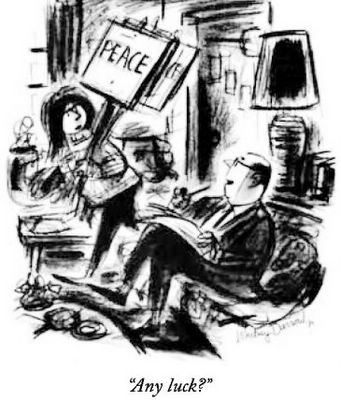
This poem by harpist Helen Radice's father (see the rest of her post here) made me remember holding my fingers up in the air and thinking they were too thin to play double-stops on my violin. I also fretted that my left middle finger was crooked from being slammed in a car door when I was a kid (young enough that the fingers were pretty rubbery, but still...)
My previous teacher said that mine Were true musician's fingers, thin And long; but his are short and thick, Craggy, weathered, firm, like rock. He says one's fingers must be strong To make the piano dance and sing. To make the piano shout and kill One lets one's weight of body fall; The greatest strength is used to form Those softest dabs of sound that seem To lift the heart beyond its beat, Just as a dancer's feet are light Whose calves are strong as piano-wire! And this is why I'm still so far From making the music match my heart. He says that it will come out right My hands grow stronger, if I try; But he must know that there's no way These spindly fingers can be made As strong as his, as firm and wide. My previous teacher said that I Was very good: one day I'd play Superbly well. She made me vain. She said my hands were long and fine. |
Labels: music
I visited Scribblingwoman's site this morning and saw she is planning to pass along to me the following "book stick" because we both got the same disappointing results on the Quizilla quiz. This meme came to her from Catalogue Annie.